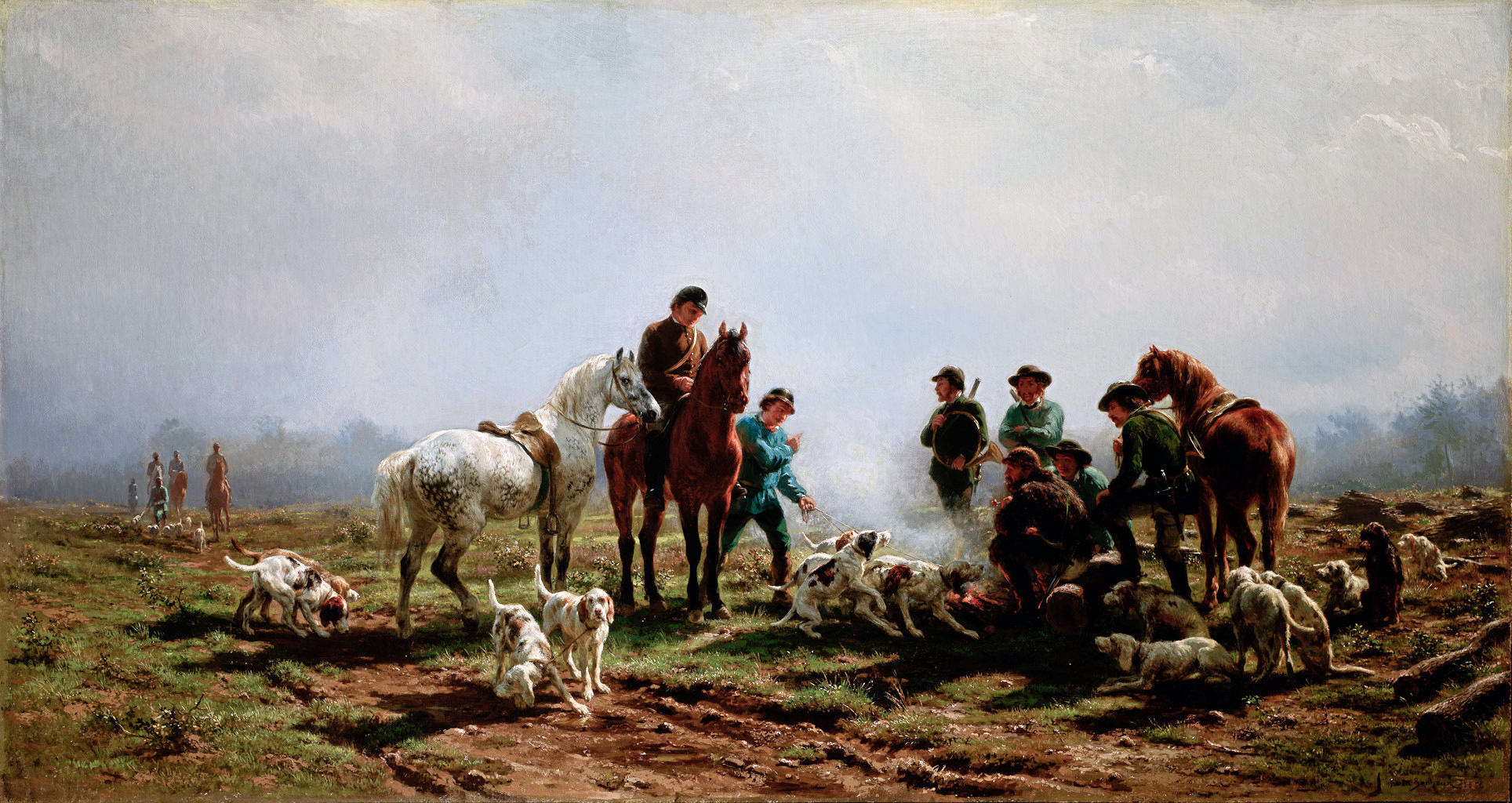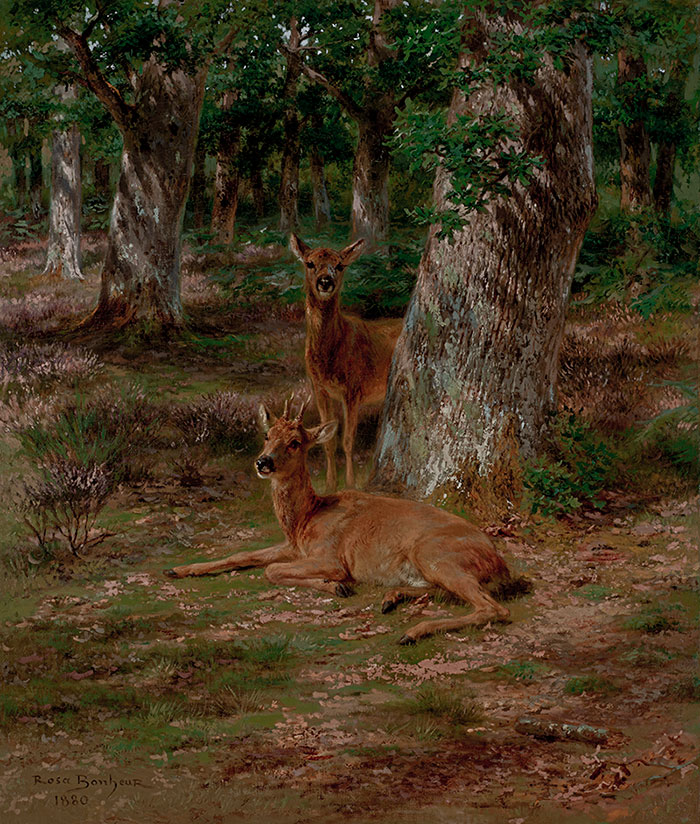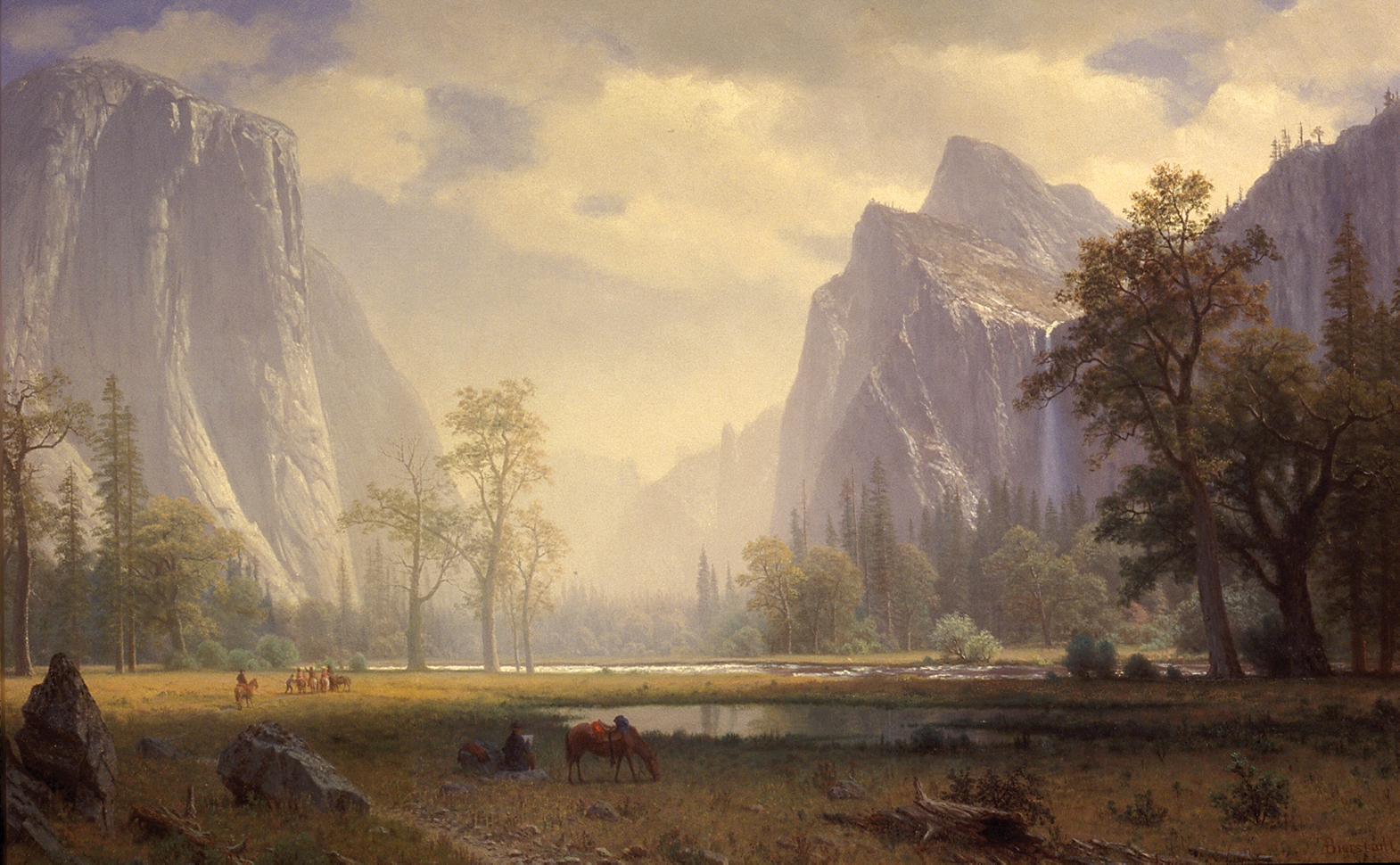Sheep in Manger

Collections


Daniel Ridgway Knight’s scene depicts the interactions of a group of French peasants who have paused for lunch. An elderly woman stirs something in a pot while a boy puts potatoes into the coals of a campfire. The young woman in the middle ground seems to be more interested in the young man and woman filling a potato sack behind her than in the preparations for lunch.
The peasants are dressed in quaint clothing; there is even a hole in the boy’s clog to denote his poverty, though none of them are dirty despite a morning of labor. The surrounding landscape is treated with incredible detail. A prickly bush that contains a heart-shaped hole has been placed behind the girl; the vines and poppies frame the human interaction. Knight draws the viewer’s eye to a collection of items—wagon traces, harness, a potato hoe, baskets, and bottles—to add interest and to show the subtle contrast of light and dark throughout the canvas.
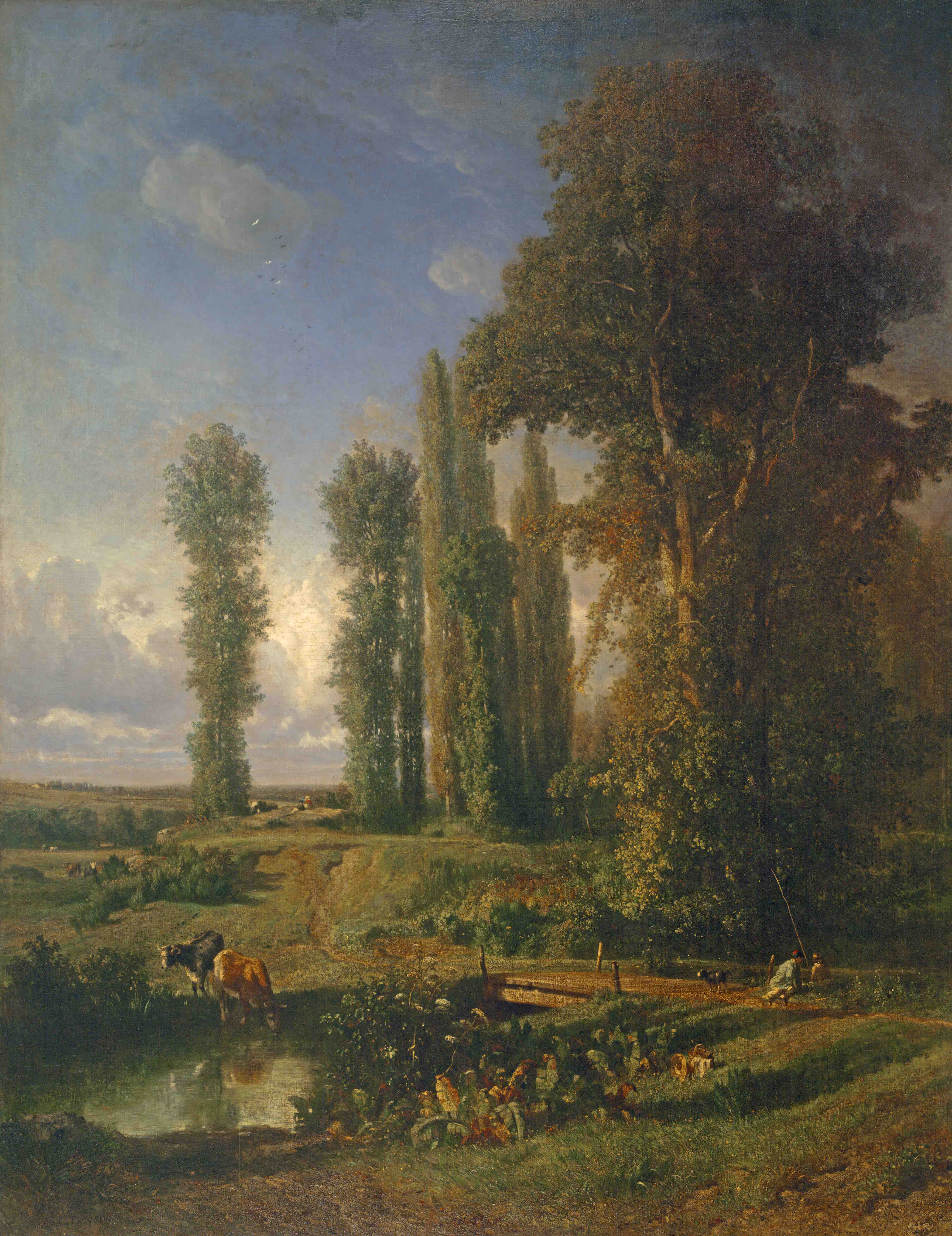
Novelist Alexandre Dumas wrote of Troyon’s work that it was “striking, full of truth, energy and life.” The large scale of the painting reinforces Troyon’s interest in inviting the viewer to join the charming scene. The late summer afternoon and endless sky seem to go on forever.
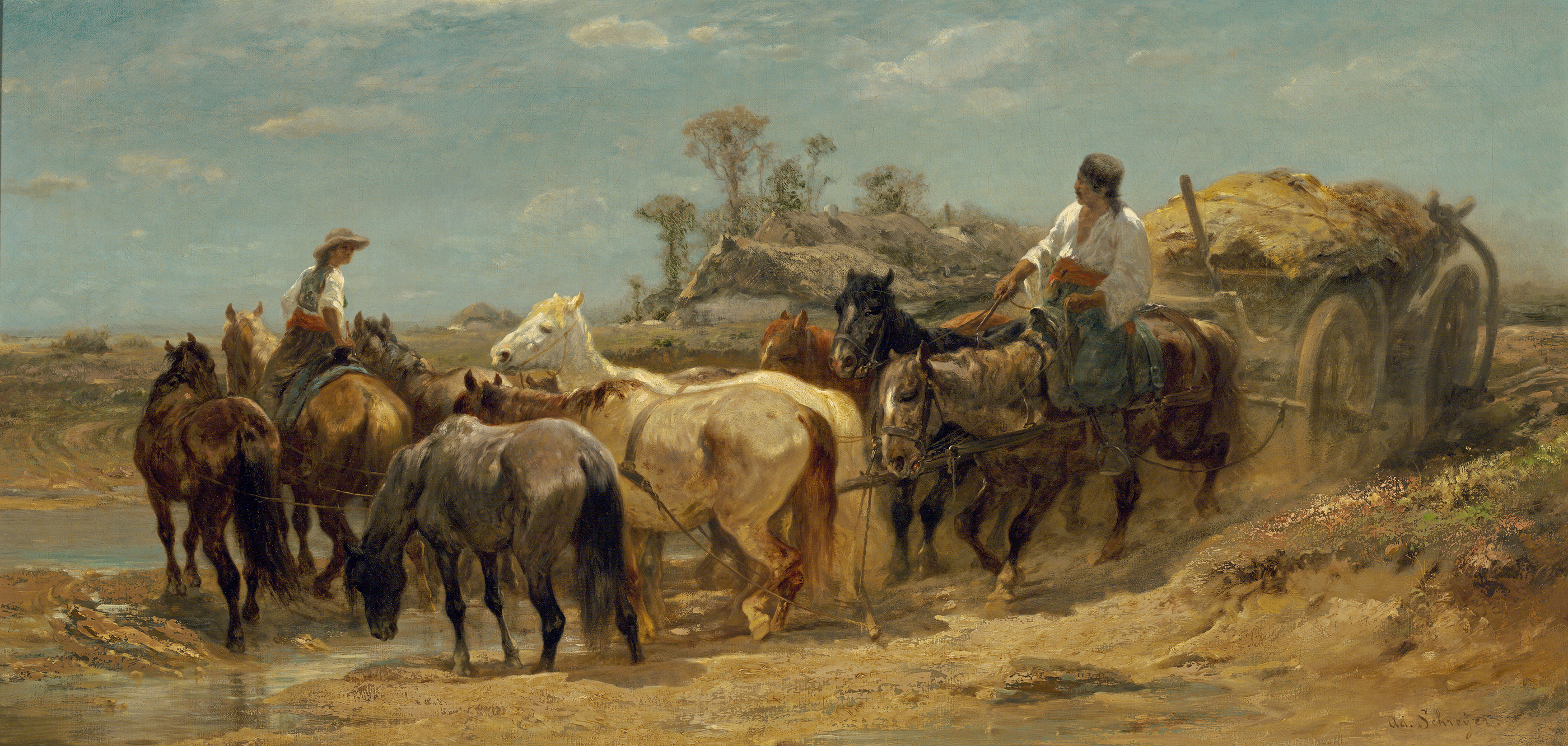
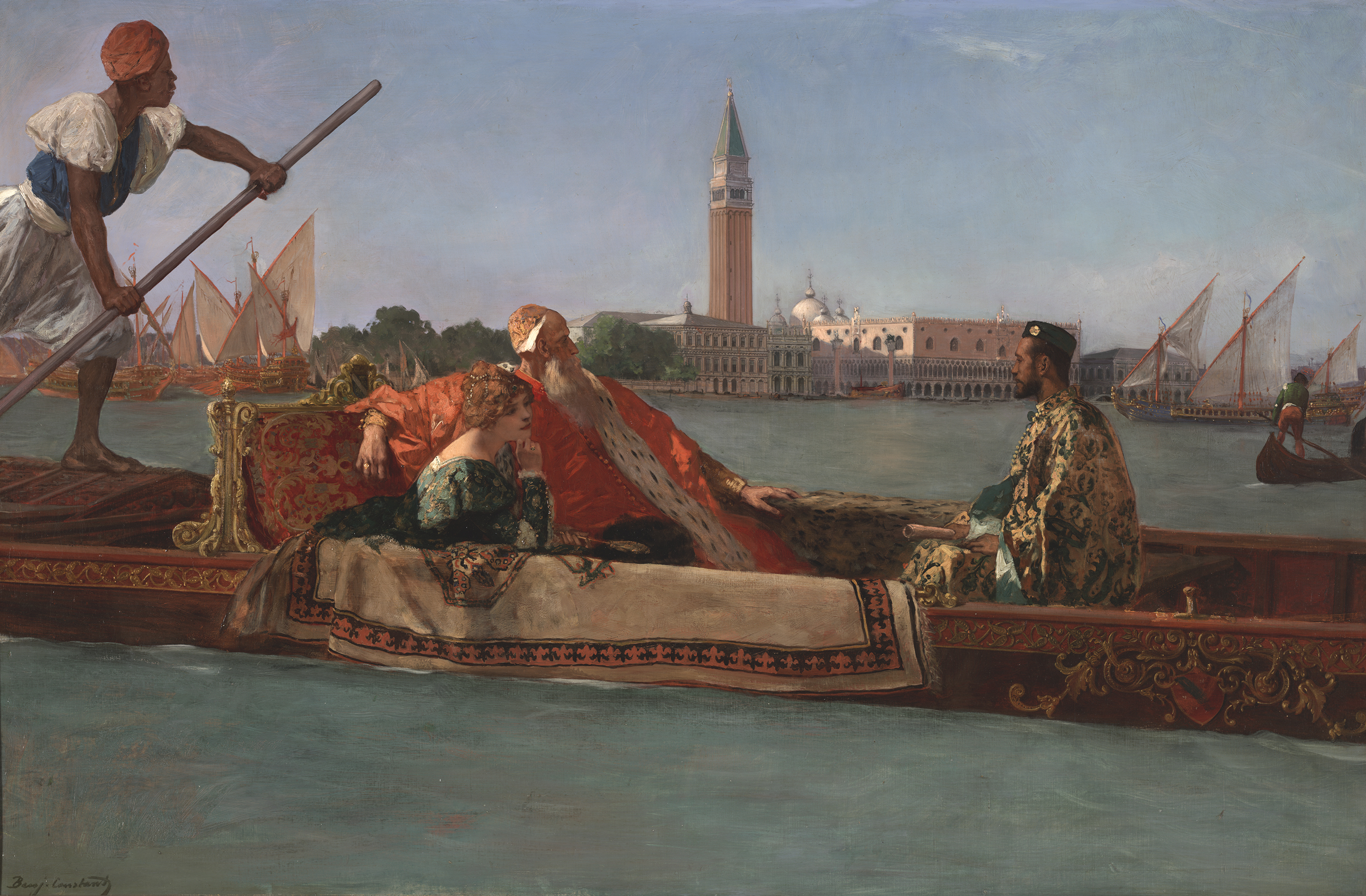
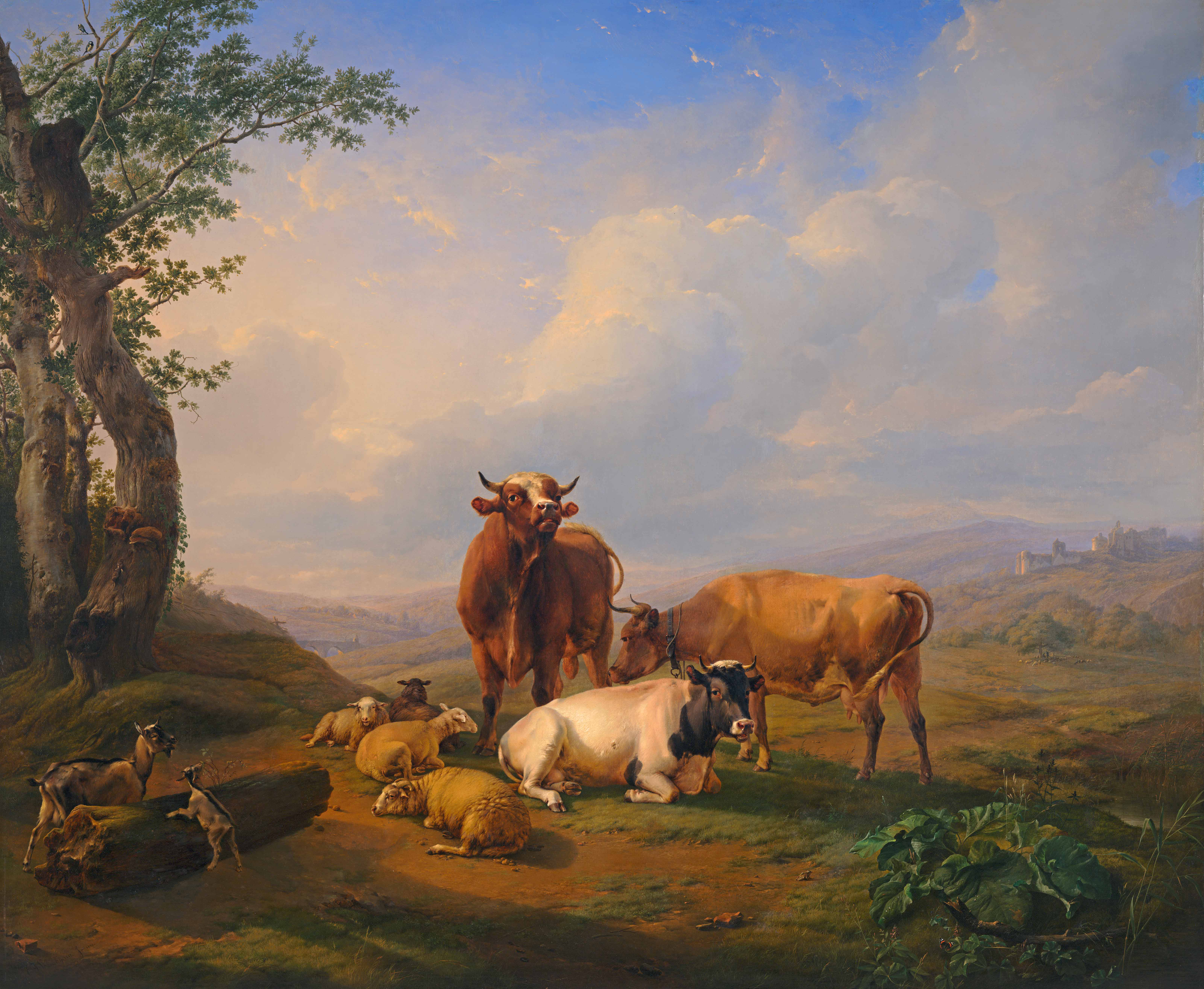

The Saddle Bazaar, Cairo, exhibits concerns typical of the Orientalist painter: exotic customs, physiognomy, dress, and architecture. From memories of his many journeys to Egypt and from studio memorabilia, Jean-Leon Gerome has re-created a corner of Cairo. Attention is focused on a magnificent white horse with henna-dyed mane and tail, and on a transaction between a bashi-bazouk (Turkish merchant) and a Jewish merchant. With expressive gestures the men actively bargain over a bridle. The horse seems to listen with interest, a witty touch as is often found in Gerome’s work. The anecdote is kept simple, so as not to detract from the picturesque accessories and costumes or from the carefully observed anatomy of the horse. Tack displayed before the stall and hanging from a rope help define the setting as Cairo’s saddle bazaar.
